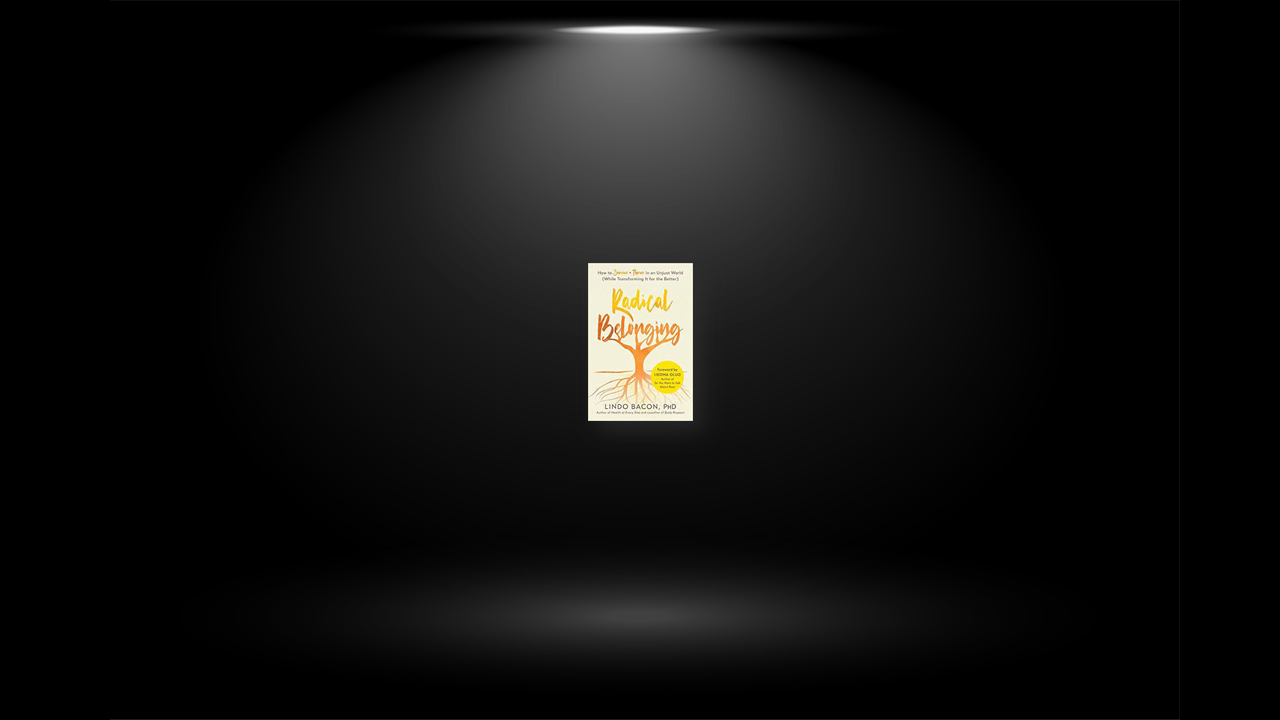It’s Not You, It’s Our Culture
It would be wonderful if you could always carry with you the knowledge that you are okay just as you are. But that’s a hard thing to maintain in this culture. Few of us feel as if we really belong, be it in our own bodies or interacting in the world. We don’t all get the love and respect we deserve.
Sometimes we join others in rejecting those parts of ourselves not valued by others. Our complicity in an alienating system may be most painful of all. Many of us not only feel alienated, we feel alone in our alienation. We keep silent about it, which allows it to perpetuate. Ashamed of our feeling of alienation, we treat it as a personal inadequacy, something to hide. Our feelings of unbelonging come to dominate our psyches.
To manage these consequences, we try to manage impressions. We intuit biases to try to defuse them. We modify ourselves. We censor ourselves, watching not just what we say but the tone or accent we say it in. We are forced to hide parts of ourselves, or to perform acceptable versions of ourselves, all in order to fit in and belong. Because when we don’t belong, there is danger—to our physical persons and to our innermost selves.
The tragedy of social and systemic exclusion is that the rejection turned against our bodies manifests as maladies: depression, anxiety, addictions, eating disorders, gastrointestinal disorders, metabolic diseases, and more. Our bodies are punished when the real culprit is not us but our unjust culture.
It’s not we ourselves who are to blame for feeling that we do not belong, but rather the structure under which we live that continually perpetuates violence against us. The culture wants all of us who feel like outsiders to know that our voices are not only necessary but desperately needed to get us out of this mess we’re in right now. No matter what cultural messaging may say, we deserve to feel that we belong in our bodies. We are human, we are whole, we are powerful—together and alone.
This Is Your Brain on Stress
The human body has self-protective mechanisms in place to help us survive. Our fight-or-flight survival response is designed to mobilize our brain and body to fight an enemy or run from danger. We also have a freeze response that can help us hide from a predator. Both fight-or-flight and freeze can also be triggered by social stress.
A fight-or-flight response starts when a brain structure known as the hypothalamus senses threat and initiates a sequence of events that results in the release of neurotransmitters and hormones like epinephrine and cortisol into our bloodstream. These trigger dramatic changes: Our breathing rate increases. Blood is redirected away from our digestive tract and into our muscles and limbs, which require extra energy. Our awareness and vision sharpen, impulses accelerate, and perception of pain is blunted. We become prepared for fight or flight, both physically and psychologically. We also become hypervigilant and distrustful, on the lookout for the enemy.
When activated, our fight-or-flight system triggers us to perceive everything around us as a potential threat to our survival. It’s built to bypass our rational mind. This alertness causes us to interpret almost everything and everyone in our world as a potential threat. As a result: We may overreact to the slightest comment. Our fear is exaggerated. Our thought process is distorted. Our focus is narrowed to things that can harm us.
When we’re stuck in survival mode, our heart shuts down, our rational mind is disengaged, and we’re focused on fear. This prevents us from making thoughtful choices and recognizing the consequences of those choices. We can no longer relax and appreciate the moment. Relationships suffer.
Chronic activation of our stress system also increases our allostatic load, which ups our risk for a long list of conditions and maladaptive behaviors, including anxiety attacks, metabolic disorders, and yeast
This Is Your Brain on Trauma
Trauma forces us to see that people are vulnerable to their environment, providing a conceptual framework for understanding how oppressive social and political conditions get inside us and cause personal suffering and dysfunction.
In a society organized around domination, it is inevitable that trauma will be pervasive, both because the systemic oppression itself is traumatizing and because the power differential that is an aspect of oppression supports individual acts of domination. Calling out structural injustice shifts the blame off individuals, similar to how a trauma-informed approach shifts the question from “what is wrong with you?” to “what happened to you?” This shift acknowledges and destigmatizes the challenges we face and empowers us to engage in personal and community healing.
Unresolved trauma doesn’t just harm individuals—and drive self-harm—but also drives a cycle wherein victims become perpetrators, harming and traumatizing others. Among those who have committed serious crime, the vast majority have also suffered trauma. Few death row inmates have not suffered lives that read like a case study of extreme abuse, and it is the rare juvenile incarcerated for rape or murder who has not endured a cruel childhood. Abusers are humans with stories, just like us. Absorbing our culture, we all become perpetrators—perhaps not as explicit abusers, but in the unconscious bias that lodges in our mind and bodies, fueling the microaggressions that slowly and cumulatively traumatize, a topic of considerable discussion later in the book. Understanding this helps us generate compassion for ourselves and others, even as our actions do harm, and instills us with the responsibility to unlearn the lies we have been taught.
Trauma lives in the body and sets our behaviors in motion, but we can heal, and even come out stronger. All trauma can disconnect us from our bodies, and the cultural body hierarchy can have the impact of disconnecting some of us even further, deepening our body shame and making us believe our bodies do not belong to us. It takes active work to reclaim your body—to stay with it, trust it, and care for it. But it can be done.
To begin, we must recognize that our traumas are not our fault, and that we are not alone in our woundedness. We are all suffering from the individual and collective traumas of injustice and finding our way in a world that doesn’t give equal access, opportunity, or respect.
What connects us to one another is our human vulnerability—our need for belonging, for feeling valued and connected to others—and the distress we feel without it. This realization of our shared humanity can move us to seek connection with empathetic and understanding others. Connection with others, in turn, can help us feel safe enough to wade into our pain and vulnerability, rather than trying to escape it through disconnection or other coping behaviors.
Getting to Vulnerability
Vulnerability is about allowing people to see us, as we are, in all our human messiness. It’s the key to connection. We all deserve to know that our lives have value, that what we have to offer the world is useful, and that the people around us value and appreciate us beyond our surface. When we protect ourselves and don’t show our vulnerability, we cut ourselves off from love, intimacy, and connection. They come to us through the same door.
While it is the key to connection, communion, and community, vulnerability heals only when there’s a certain degree of safety. Some people may abuse it. We will get hurt sometimes. Relationship pain is an unavoidable aspect of being human. But when we can see this for what it is—perhaps the sign of a mismatch between two people—we can use our pain as a learning opportunity to help us make better choices in the future. The fear of rejection supports us in identifying the people who can best respect and appreciate us.
Providing safe space for someone else to be vulnerable is a tremendous gift to bestow, a gift from which the giver benefits greatly. It is a life-affirming experience to have someone offer you their vulnerability, to know that you have done enough for them to trust you with something so intimate. We should all be able to experience this.
When trust is building and vulnerability is being met and returned with a mutual gift of revelation and intimacy, that is where transformation, healing, and connection emerge. When the space between us is curious, brave, and safe, a new world is born. The key to healing—for ourselves and the world!—is the willingness to be (wisely, carefully) vulnerable and to connect with each other and create ways to make it safe for people to enter into that experience with us.
Embracing your own vulnerability is hard, but not nearly as hard as giving up on connection and belonging. Choose vulnerability—but choose it wisely. It is important to protect yourself without closing yourself off. Learning to navigate vulnerability carefully is paramount because vulnerability is the seed of connection. As you’ll learn in the next chapter, connection can bolster us when we come up against hard times and oppression; it is the precursor and process by which we create a much better world.
Connection Is the Antidote
Connection is vital to health, happiness, and well-being, and a fear of connection keeps us walled off and estranged from one another. When we recognize the systemic—and biological!—roots of our distance from others, we realize that others experience this, too. We’re wired to both need and fear connection, but so are other people. We all share this, and we can bond over our shared need for connection.
We don’t create connection. The connection is already there. Instead, we restore the connection that was interrupted by a culture of othering. Connection is inherently collective. We have to do it together. The more we say so, to each other, and see the same experience in others, the more we break out of self-blame. We’re all experiencing woundedness—and that’s where the light gets in. That’s exactly how we come together. The woundedness you feel is not a flaw in you, it’s your humanity. This human vulnerability—the need for belonging, for feeling valued and connected to others—and the distress we feel without it connects us to one another. Connection with others dissipates the shame of feeling that somehow you as an individual are defective.
The search for individual solutions is a trap that keeps us mired in injustice. Bonding together and supporting one another as we sit with our vulnerability and collectively resist systemic injustice creates a culture of belonging in the present as it also works to catalyze social, cultural, and institutional change.
This is what is needed from each of us, whether it is in our role as friends, health professionals, or members of a global community. It’s in connection and shared struggle that beauty and tenderness lie. We have to learn it together and together create spaces for vulnerability, trust, and intimacy. This mission, and the skill-building that comes with it, is different from an interior, individualistic focus on self-love. It looks outward. Coping mechanisms like self-care and self-love are indeed important, but it’s when we practice community care by organizing, supporting, and trusting each other, that we deepen the healing and paradigm-shifting.


